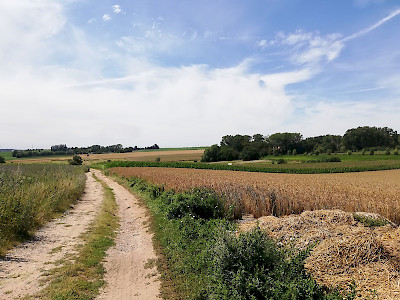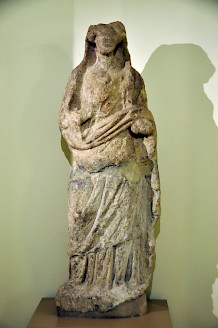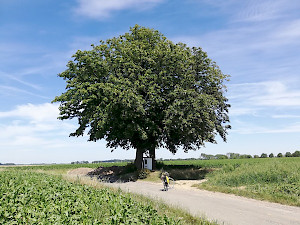Geminiacum (Liberchies)
Q2371918
Julius Caesar’s campaigns in northern Gaul (Gallia Belgica) had been genocidal and there is evidence that the country was left very thinly populated. The emperor Augustus (r.27 BCE - 14 CE) sought to repopulate it and the Romans transferred entire tribes. The Ubians, Batavians and Sugambrians moved from the eastern to the western banks of the Rhine. The more inland area – say today's Belgium – was redesigned, so to speak, from the drawing board, with urban hubs such as Bagacum (Bavay) and Atuatuca (Tongeren) and a network of major roads. They are traditionally called Chaussée Brunehaut, after the Frankish queen Brunhild, who (according to a fourteenth-century legend) had them repaired.
Agricultural production center
Geminiacum ("the tax district of Geminus") was one of the settlements along the road, fifty-one kilometers east of Bagacum, near a bridge over a stream that is now called Monplaisir. The houses of Geminiacum were remarkably large and deep, built directly on the road, without a sidewalk or porch. There was a bathhouse, but the building next door was not the usual inn. The village also boasted a rather large sanctuary in the north, while the economy revolved around the huge farms in the area. It is possible that the big houses were at the same time warehouses for the agricultural products.

Founded on a hill during the reign of Augustus, Geminiacum reached its greatest extent in the second century. Houses were no longer made of wood; instead, natural stone and bricks were used. It was an age of prosperity. Problems arose in the third century.
Crisis
In c.256 CE the Franks broke through and destroyed northern Gaul. Geminiacum also suffered in these years. However, in 260, general Postumus put things in order and founded a “Gallic Empire”. Unlike the emperors in the old empire, the Gallic rulers chose a double line of defense. Behind the Rhine limes they built a second series of reinforcements along the main road from Atuatuca to Bagacum. Invading Franks would now place themselves between two lines of forts, which was dangerous; they could avoid that by first conquering fortresses on the Rhine, but then their opponents would send forward reinforcements from the second line. This system is known as “defense in depth”, and Constantine the Great (r.306-337) would later implement it throughout the empire.
Postumus also fortified Geminiacum. A fort was built in the road village. A little to the west, at a place called Brunehaut, a second fortress was erected.

This was also the time of Christianization, and it seems that a small temple, located just southeast of the two fortresses at one of the large estates, was converted into a chapel. There is still a sanctuary in that place, which is called “aux trois arbres”.
The Language Border
In the fourth century, general Julian allowed the Franks and Chamavi to settle in the area between the two lines of defense. There, the immigrants lived on sandy soil; the fertile loess remained Roman. This is explains the course of the Language Border in modern Belgium: Frankish/Dutch on the sandy soils north of the Chaussée Brunehaut, Latin/French on the loessial soils south of that street.